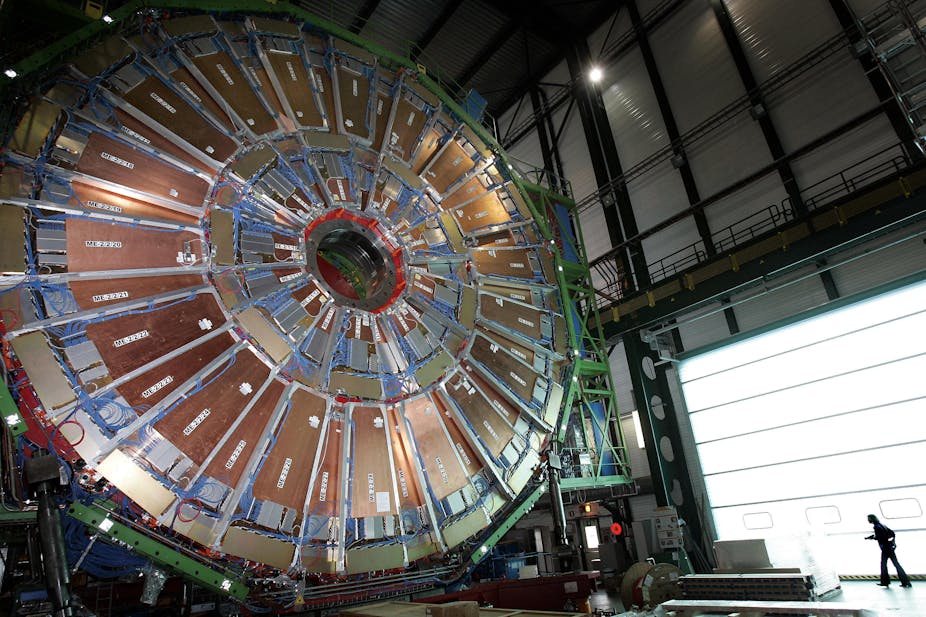Switzerland’s Large Hadron Collider (LHC) can be called a time machine in one sense: it enables us to examine conditions as they were during the universe’s early stages.
But is the 27km-long particle accelerator a time machine of the kind in science fiction?
In other words, can it create conditions that allow matter, radiation or information to travel back and forth in time?
In 2009, Holger Nielsen and Masao Ninomiya (both respectable physicists) proposed that “retrocausal” influences from the future could have been responsible for the LHC’s initial failure to operate, with nature effectively sabotaging efforts to get it up and running.
This calls to mind the “grandfather paradox”, and one possible response to it, which goes something like this: if you travelled into the past to kill your grandfather, thus preventing your own existence, events would intervene to frustrate any such attempt.
Nielsen and Ninomiya suggested that the LHC was being sabotaged from the future by nature’s abhorrence of large quantities of Higgs boson particles, the idea being that any Higgs generator (such as the LHC) would be plagued by apparent ill-fortune.
Well, the LHC is up and running again, for the third time in as many years, and proposals regarding time travel continue.
Many of these are perfectly legitimate in the context of theoretical physics.
Einstein’s theory of General Relativity tells us that the geometry of spacetime (how it curves, and therefore how objects move) can be determined by solving equations.
Depending on how you approach this process, you can get any number of possible universes with different shapes, some of which allow forms of time travel (defined as a journey with a negative net travel time).
You can also do this the other way around, and simply pick a “time machine solution” (a wormhole, for example) and try to figure out what kind of stuff would be needed to generate it (although one usually needs exotic, physically unrealistic material to produce the right shape).
A recent hypothesis, proposed by Thomas Weiler and Chui Man Ho of Vanderbilt University, hinges once again on the elusive Higgs boson particle, this time also predicting that Higgs production would also produce another particle, called a Higgs singlet.
What’s more, they argue their proposal involves physically realistic matter, escapes all the usual paradoxes and is testable.
Weiler and Man Ho’s proposal uses ideas from M-Theory, in particular the idea that our universe is a four-dimensional slice within a much larger 11-dimensional world.
According to this view, the stuff of our universe is forever constrained to this slice, unable to travel in the other dimensions, with some exceptions.
Gravity is one exception; and Higgs singlets are another, since they only interact via gravity.
Weiler and Man Ho invoke a fifth dimension (curled up into a circle) as a shortcut along which Higgs singlets can travel backwards in time, appearing before the events that created them.
They also argue that since ordinary objects, such as humans, cannot be transported backwards in time in this way, grandfather paradox situations are eliminated.
Does this demonstrate that time machines might at last be within our grasp? Well, not quite.
Though only Higgs singlets (and gravity) can travel in the fifth dimension, Weiler and Man Ho claim the following: if the production of Higgs singlets can be controlled, those particles might be able to carry messages into the past or future.
But here’s a thought. Criminals behind bars can be very effective in running their external affairs by simply passing information along the right channels.
If one can use time-travelling singlets to transmit information, then one could (in principle) use this mechanism to send a “kill my grandfather” instruction to an assassin in the past.
And so where does this leave us? And the LHC? Only time will tell.

